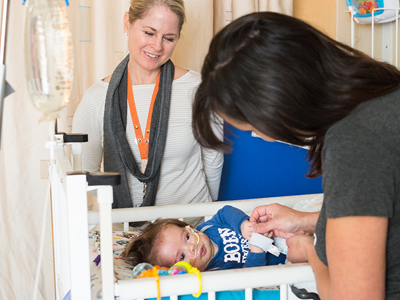- Doctors & Departments
-
Conditions & Advice
- Overview
- Conditions and Symptoms
- Symptom Checker
- Parent Resources
- The Connection Journey
- Calm A Crying Baby
- Sports Articles
- Dosage Tables
- Baby Guide
-
Your Visit
- Overview
- Prepare for Your Visit
- Your Overnight Stay
- Send a Cheer Card
- Family and Patient Resources
- Patient Cost Estimate
- Insurance and Financial Resources
- Online Bill Pay
- Medical Records
- Policies and Procedures
- We Ask Because We Care
Click to find the locations nearest youFind locations by region
See all locations -
Community
- Overview
- Addressing the Youth Mental Health Crisis
- Calendar of Events
- Child Health Advocacy
- Community Health
- Community Partners
- Corporate Relations
- Global Health
- Patient Advocacy
- Patient Stories
- Pediatric Affiliations
- Support Children’s Colorado
- Specialty Outreach Clinics
Your Support Matters
Upcoming Events
Mental Health Town Hall
Tuesday, April 23, 2024Join Children’s Hospital Colorado pediatric experts for a virtual...
-
Research & Innovation
- Overview
- Clinical Trials
- Q: Pediatric Health Advances
- Discoveries and Milestones
- Training and Internships
- Academic Affiliation
- Investigator Resources
- Funding Opportunities
- Center For Innovation
- Support Our Research
- Research Areas

It starts with a Q:
For the latest cutting-edge research, innovative collaborations and remarkable discoveries in child health, read stories from across all our areas of study in Q: Advances and Answers in Pediatric Health.


Neonatal Jaundice and Bilirubin Levels in Newborns (S1:E21)
Pediatric primary care providers (PCPs) who take care of newborns spend a lot of time thinking about infant jaundice and elevated bilirubin in infants. While neonatal jaundice is typically diagnosed based on the infant’s appearance, measuring the level of bilirubin in the baby's blood is also critical.
When assessing a potential case of infant jaundice, PCPs should also analyze the medical histories of both the mother and infant, beginning with a careful review of the baby's chart.
Listen to our pediatric experts discuss infant jaundice, including risk factors for neonatal jaundice
On this episode of Charting Pediatrics, Dave Scudamore, MD, joins us to talk about neonatal jaundice. We discuss some of the most common risk factors for neonatal jaundice, best practices for measuring elevated bilirubin in infants and other considerations.
Dr. Scudamore is the Director of Inpatient Medicine for the System of Care at Children's Hospital Colorado, and he is also an assistant professor of pediatrics in hospital medicine at the University of Colorado School of Medicine.
In this episode, our experts explore:
- The major risk factors for severe infant jaundice that can cause complications with neonates
- How to assess mom and baby for the risk factors of neonatal jaundice by reviewing patient history and birth data
- Specific criteria PCPs should assess in the nursery, including bruising
- Difference between the risk factors for elevated bilirubin levels in infants and the risk factors for neurotoxicity
- Prematurity as a risk factor for neonatal jaundice
- The significance of the ratio between albumin and bilirubin
- Standard protocols for workups when measuring elevated bilirubin levels in infants
- Best practices for continued monitoring of risk factors for neonatal jaundice
- How PCPs can provide elevated care of jaundiced infants through a patient-centered care approach
- Why considering the context of individual infant jaundice cases is so important
- How to utilize the Bhutani curve to assess risk and the American Academy of Pediatrics (AAP) guidelines to initiate phototherapy for jaundice treatment
- How to manage cases of high-risk neonatal jaundice where the infant does not meet recommendations for phototherapy
- The importance of lactation support for mothers
- The importance of patient follow-ups in this pediatric population and their role in intervention
Treating neonatal jaundice at Children's Colorado
Babies with jaundice are first treated by the pediatric experts in the Primary Care department at Children's Colorado. Each primary care provider on our team is committed to offering compassionate and comprehensive care for babies and their families. Refer a patient to Children's Colorado.



 720-777-0123
720-777-0123





